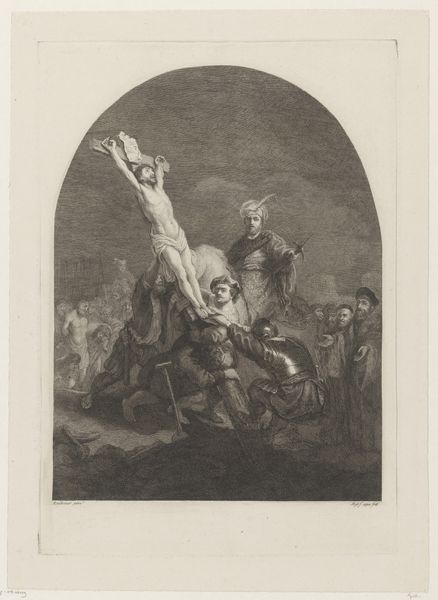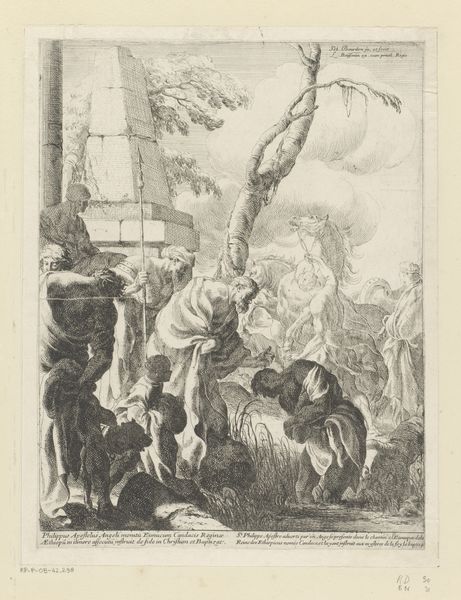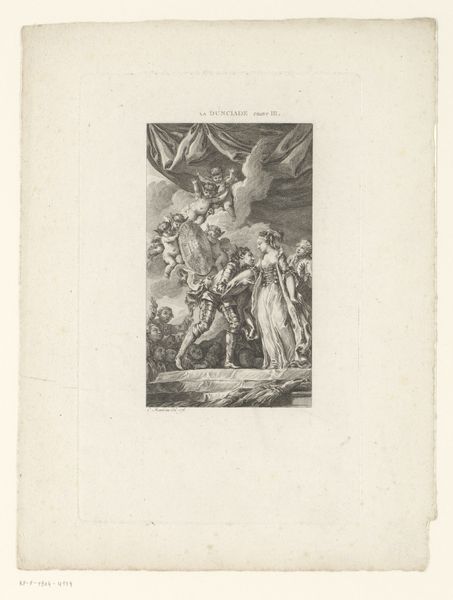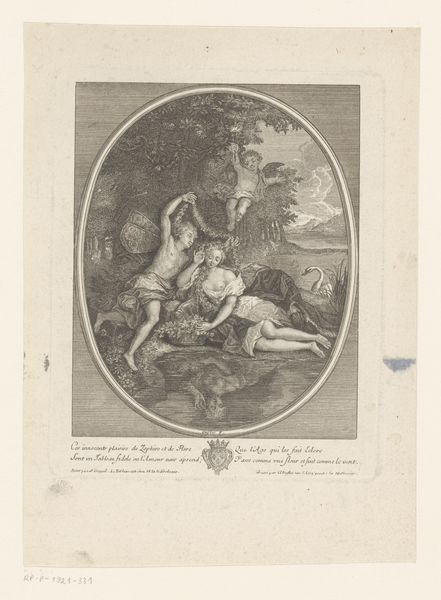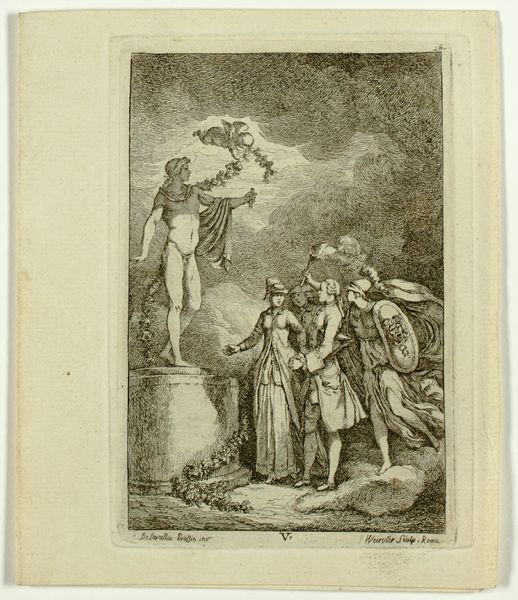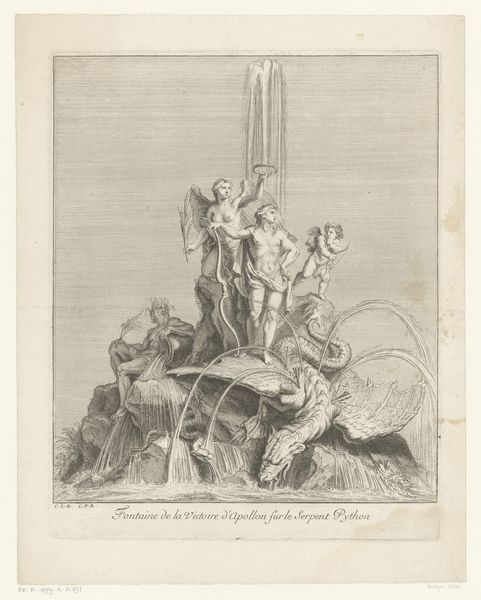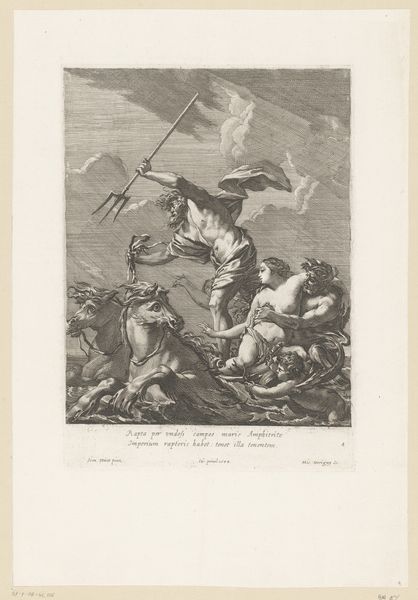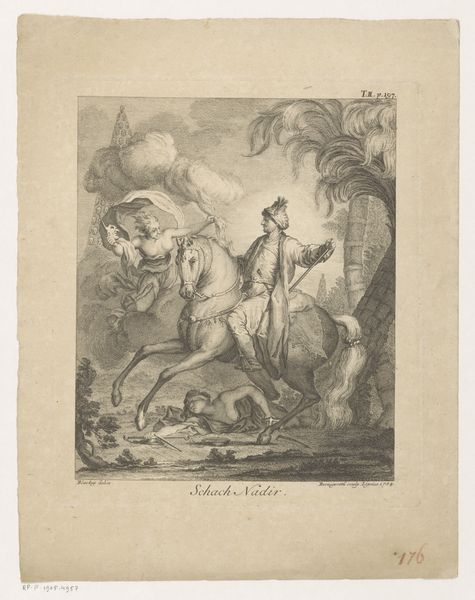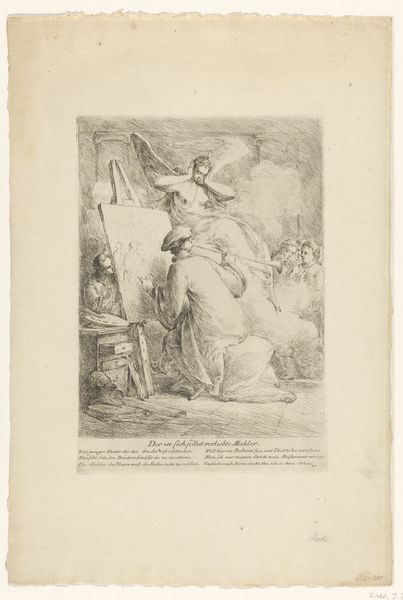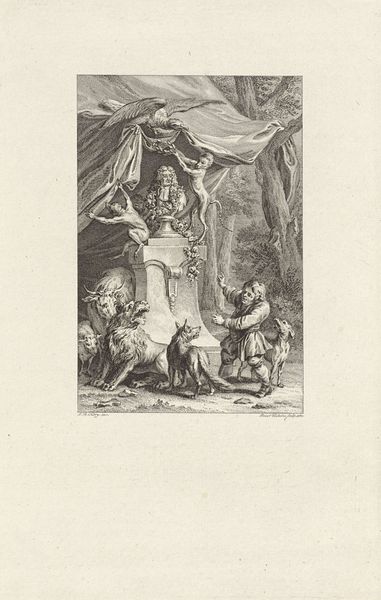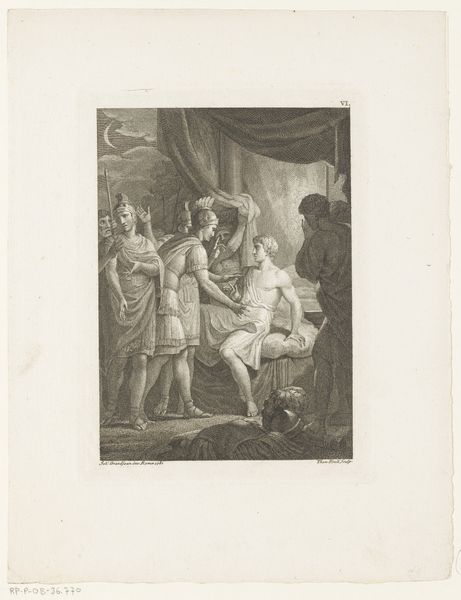
Dimensions: height 338 mm, width 236 mm
Copyright: Rijks Museum: Open Domain
Carl Ernst Christoph Hess made this print of ‘Kruisafname’ using etching, a printmaking technique in which acid is used to corrode a design into a metal plate. The plate is then inked and used to print the image onto paper. The way that Hess employs line in this print is particularly striking. See how he uses closely spaced lines to create areas of shadow, and more widely spaced lines to suggest lighter areas? This gives the image a great sense of depth and texture, and captures the emotional intensity of the scene. The fine lines give the artwork a sense of detail and precision. But the etching is not just a neutral vehicle for imagery; it also carries its own historical and social weight. In the 18th and 19th centuries, printmaking was closely tied to the rise of capitalism and mass production. Prints like this one allowed images to be widely disseminated and consumed, contributing to the growth of a visual culture that continues to shape our world today. So when we look at this etching, we are not just seeing a religious scene, but also a testament to the power of art to shape our understanding of the world.
Comments
No comments
Be the first to comment and join the conversation on the ultimate creative platform.
